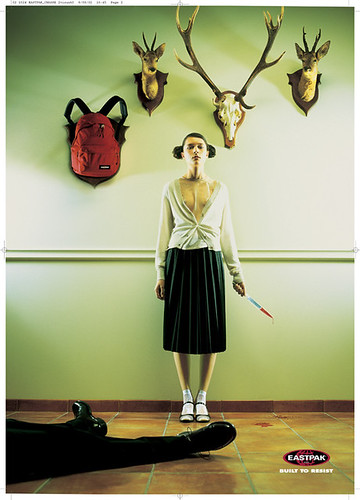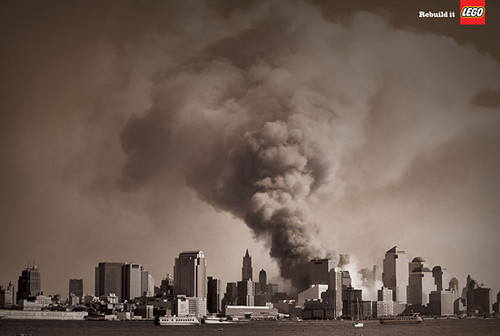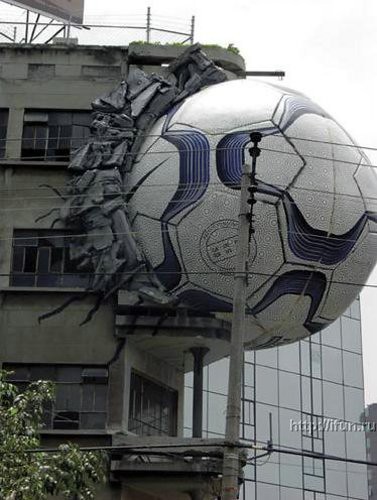Why use condoms?
Toyota: Everything Keeps Going Right
Satis-Fashion Footwear: Polishing Shoes
Blockbuster Super Bowl Ad
Blockbusters Superbowl ad featuring the return of Ray and Carl!!!
Sport newspaper commercial
Statoil: Bad morning?
Japp Chocolate
Harley Davidson: Respect
FedEx: Castaway
New GAP is Coming - Pardon Our Dust
About Me

- design-advertising
- Advertising design,e advertising, brand advertising,agency advertising, ad advertising , commercial ads ,funny ads, print ads
Wednesday, June 25, 2008
Friday, June 20, 2008
agency advertising
An advertising agency or ad agency is a service business dedicated to creating, planning and handling advertising (and sometimes other forms of promotion) for its clients. An ad agency is independent from the client and provides an outside point of view to the effort of selling the client's products or services. An agency can also handle overall marketing and branding strategies and sales promotions for its clients.
Typical ad agency clients include businesses and corporations, non-profit organizations and government agencies. Agencies may be hired to produce single ads or, more commonly, ongoing series of related ads, called an advertising campaign.
List of advertising agencies
Below is a list of the major advertising agencies and marketing groups in the world, according to trade magazine Advertising Age.
Agency
1 Omnicom Group New York City
BBDO
DDB Worldwide
TBWA\Worldwide
Element 79 Partners
Goodby Silverstein & Partners
Arnell Group
GSD&M
Roberts & Tarlow
Zimmerman Advertising
Merkley & Partners
Martin/Williams
2 WPP Group London
Grey Global Group
JWT
Ogilvy & Mather
Young & Rubicam
Wunderman
RTC Relationship Marketing
Blast Radius
Burson-Marsteller
3 Interpublic Group of Companies New York City
Campbell Mithun
Campbell-Ewald
Dailey & Associates
Deutsch Inc.
Draftfcb
Hill Holliday
Lowe Worldwide
Mullen Advertising
The Martin Agency
McCann-Erickson
TM Advertising
4 Publicis Groupe Paris
Bartle Bogle Hegarty
Fallon Worldwide
Leo Burnett Worldwide
Publicis & Hal Riney
Saatchi and Saatchi
5 Dentsu Tokyo
6 Havas Suresnes, France
Euro RSCG
Arnold Worldwide
Messner
7 Aegis Group London
8 Hakuhodo DY Holdings Tokyo
9 Asatsu-DK Tokyo
10 MDC Partners Toronto/New York City
Crispin Porter and Bogusky
Kirshenbaum Bond and Partners
Margeotes Fertitta and Powell
11 Carlson Marketing Group Minneapolis
12 Sapient Corp. Cambridge, Massachusetts
13 Digitas Boston
14 aQuantive (Owned by Microsoft) Seattle
15 Aspen Marketing Services West Chicago, Illinois
16 Media Square London
17 HealthSTAR Communications Woodbridge, New Jersey
18 Cheil Communications Seoul
19 George P. Johnson Co. Auburn Hills, Michigan
20 Epsilon Wakefield, Massachusetts
21 TBA Global Events Woodland Hills, California
22 Monster Worldwide New York City
23 Clemenger Communications Melbourne
24 WB Doner & Company Southfield, Michigan
25 Cossette Communication Group Quebec City
26 Tokyu Agency Tokyo
27 Media Consulta Berlin
28 Alloy Media & Marketing New York City
29 Richards Group Dallas
30 Mosaic Sales Solutions Irving, Texas
31 STW Group Sydney
32 Bartle Bogle Hegarty London
33 M&C Saatchi London
34 LB Icon Stockholm/Amsterdam
35 InChord Communications Westerville, Ohio
36 Chime Communications PLC London
37 Marketing Store Lombard, Illinois
38 Merkle Lanham, Maryland
39 Wieden+Kennedy Portland, Oregon
40 RPA Santa Monica
41 DVC Worldwide Morristown, New Jersey
42 Scholz & Friends Group Hamburg
43 Armando Testa Group Turin
44 Cramer-Krasselt Chicago
45 Serviceplan Agenturgruppe Munich
46 ChoicePoint Precision Marketing Alpharetta, Georgia
47 Harte-Hanks Direct Langhorne, Pennsylvania
48 SourceLink Elk Grove Village, Illinois
49 Protocol Integrated Direct Marketing Deerfield, Illinois
50 Viralytics Media Chicago, IL
51 Asahi Advertising Tokyo
52 Twin Cities Ad Minneapolis,MN
Other notable agencies
Listed alphabetically. These agencies have won major national and international advertising awards for multimillion-dollar clients, or they were among the earliest agencies created.
Ally & Gargano (1963-1991)
Bernstein-Rein
Bozell Worldwide (founded in 1921)
Cordiant Communications Group
Della Femina, Travisano and Partners
DeVito/Verdi
D'Arcy Masius Benton & Bowles (1906-2002)
FK3 - Communicating Innovation
la comunidad
MARC USA
N. W. Ayer & Son (1869-2002)
Lord & Thomas (founded 1873, became Foote, Cone & Belding in 1942)
Neathawk Dubuque & Packett (founded in 1963)
Scali, McCabe and Sloves (founded 1967, acquired by Lowe Worldwide in 1993)
Tarek Nour Communications (founded in 1979) in Giza, Egypt
Typical ad agency clients include businesses and corporations, non-profit organizations and government agencies. Agencies may be hired to produce single ads or, more commonly, ongoing series of related ads, called an advertising campaign.
List of advertising agencies
Below is a list of the major advertising agencies and marketing groups in the world, according to trade magazine Advertising Age.
Agency
1 Omnicom Group New York City
BBDO
DDB Worldwide
TBWA\Worldwide
Element 79 Partners
Goodby Silverstein & Partners
Arnell Group
GSD&M
Roberts & Tarlow
Zimmerman Advertising
Merkley & Partners
Martin/Williams
2 WPP Group London
Grey Global Group
JWT
Ogilvy & Mather
Young & Rubicam
Wunderman
RTC Relationship Marketing
Blast Radius
Burson-Marsteller
3 Interpublic Group of Companies New York City
Campbell Mithun
Campbell-Ewald
Dailey & Associates
Deutsch Inc.
Draftfcb
Hill Holliday
Lowe Worldwide
Mullen Advertising
The Martin Agency
McCann-Erickson
TM Advertising
4 Publicis Groupe Paris
Bartle Bogle Hegarty
Fallon Worldwide
Leo Burnett Worldwide
Publicis & Hal Riney
Saatchi and Saatchi
5 Dentsu Tokyo
6 Havas Suresnes, France
Euro RSCG
Arnold Worldwide
Messner
7 Aegis Group London
8 Hakuhodo DY Holdings Tokyo
9 Asatsu-DK Tokyo
10 MDC Partners Toronto/New York City
Crispin Porter and Bogusky
Kirshenbaum Bond and Partners
Margeotes Fertitta and Powell
11 Carlson Marketing Group Minneapolis
12 Sapient Corp. Cambridge, Massachusetts
13 Digitas Boston
14 aQuantive (Owned by Microsoft) Seattle
15 Aspen Marketing Services West Chicago, Illinois
16 Media Square London
17 HealthSTAR Communications Woodbridge, New Jersey
18 Cheil Communications Seoul
19 George P. Johnson Co. Auburn Hills, Michigan
20 Epsilon Wakefield, Massachusetts
21 TBA Global Events Woodland Hills, California
22 Monster Worldwide New York City
23 Clemenger Communications Melbourne
24 WB Doner & Company Southfield, Michigan
25 Cossette Communication Group Quebec City
26 Tokyu Agency Tokyo
27 Media Consulta Berlin
28 Alloy Media & Marketing New York City
29 Richards Group Dallas
30 Mosaic Sales Solutions Irving, Texas
31 STW Group Sydney
32 Bartle Bogle Hegarty London
33 M&C Saatchi London
34 LB Icon Stockholm/Amsterdam
35 InChord Communications Westerville, Ohio
36 Chime Communications PLC London
37 Marketing Store Lombard, Illinois
38 Merkle Lanham, Maryland
39 Wieden+Kennedy Portland, Oregon
40 RPA Santa Monica
41 DVC Worldwide Morristown, New Jersey
42 Scholz & Friends Group Hamburg
43 Armando Testa Group Turin
44 Cramer-Krasselt Chicago
45 Serviceplan Agenturgruppe Munich
46 ChoicePoint Precision Marketing Alpharetta, Georgia
47 Harte-Hanks Direct Langhorne, Pennsylvania
48 SourceLink Elk Grove Village, Illinois
49 Protocol Integrated Direct Marketing Deerfield, Illinois
50 Viralytics Media Chicago, IL
51 Asahi Advertising Tokyo
52 Twin Cities Ad Minneapolis,MN
Other notable agencies
Listed alphabetically. These agencies have won major national and international advertising awards for multimillion-dollar clients, or they were among the earliest agencies created.
Ally & Gargano (1963-1991)
Bernstein-Rein
Bozell Worldwide (founded in 1921)
Cordiant Communications Group
Della Femina, Travisano and Partners
DeVito/Verdi
D'Arcy Masius Benton & Bowles (1906-2002)
FK3 - Communicating Innovation
la comunidad
MARC USA
N. W. Ayer & Son (1869-2002)
Lord & Thomas (founded 1873, became Foote, Cone & Belding in 1942)
Neathawk Dubuque & Packett (founded in 1963)
Scali, McCabe and Sloves (founded 1967, acquired by Lowe Worldwide in 1993)
Tarek Nour Communications (founded in 1979) in Giza, Egypt
Blog Ads
The Business of Blogging
“Blogging may be the fastest-growing publishing medium ever invented. (Howarth, 2005) according to the blogging information company Technorati, there are currently 10 million blogs, a number that is growing by 40,000 every day. The term blogging is short for web log and is also known as a webblog or blog. A blog is an Internet journal that can be quickly and easily be created and maintained.
Blogs create an extensive network of information, contain links and syndicate its content; this environment provides opportunities for advertisers that no other medium has previously ever been able to provide. As WebBlogs are the newest edition to the online advertising and marketing environment, the extent to which advertisers or marketers can use blogs is yet to be established.
Blogs are creating uncertainty for businesses because of the economic impact that blogs have and continue to have are currently immeasurable. Despite the uncertainty that surrounds this new media it is undisputable that blogs can significantly impact the online advertising as they can generate awareness, burnish brands, direct and alter the organic flow of online traffic.
With the decrease in click through rates for traditional online advertising the increasing success of new inexpensive medias like blogs are becoming evident, with an impressive 5% click through rate blogs provides a great return on investment, businesses only need to invest $10 - $350 a week which is minimal in comparison to traditional media spends (Ochman, B, 2004).
With this increasing return on investment, it is evident that no organisation or company can afford to ignore this new advertising media. Despite the impact that blogs are making the vast majority of the 8 million or so blogs currently in existence have few if any ads (Mintz, J. 2005).
Ochman that there are three main reasons why businesses and organisations are not utilising blogs to their full potential; fear, ignorance and the knowledge that some of the pioneers of the advertising blogging industry are unsuccessful.
The benefits to utilising blogging far out way the disadvantages, however the disadvantages will undoubtedly cause the blog to be a failure, and could possibly place the company in a position of ridicule or place the brand in a controversial position. It is the failure of some blogs such as the Doctor Pepper racing cow. The blogging campaign wasboycotted. Negative experiences like this however could still provide publicity and created as the story not only circulating in online environment, but traditional media, creating product awareness.
Well-placed blog ads can boost a company's image as cutting-edge and versatile.. Blogs can be become a money making enterprise in themselves, sites such as the DaileyKos have over 15 million page views a month and receive over $9,000 a week in advertising. Blogs are a gateway to consumers a medium through which interactive relationships can be developed and online attitude and brand monitoring of the consumer, and their values and attitudes can occur.
“Advertisers should look at blogs in terms of brand development,says Rick Bruner of Business Blog Consulting and see them as a way to improve interactive relationships with consumers and improve search engine marketing. Blogs may be “either the biggest threat or the best opportunity marketers have encountered so far this decade. (Howarth, 2005)
“Blogging may be the fastest-growing publishing medium ever invented. (Howarth, 2005) according to the blogging information company Technorati, there are currently 10 million blogs, a number that is growing by 40,000 every day. The term blogging is short for web log and is also known as a webblog or blog. A blog is an Internet journal that can be quickly and easily be created and maintained.
Blogs create an extensive network of information, contain links and syndicate its content; this environment provides opportunities for advertisers that no other medium has previously ever been able to provide. As WebBlogs are the newest edition to the online advertising and marketing environment, the extent to which advertisers or marketers can use blogs is yet to be established.
Blogs are creating uncertainty for businesses because of the economic impact that blogs have and continue to have are currently immeasurable. Despite the uncertainty that surrounds this new media it is undisputable that blogs can significantly impact the online advertising as they can generate awareness, burnish brands, direct and alter the organic flow of online traffic.
With the decrease in click through rates for traditional online advertising the increasing success of new inexpensive medias like blogs are becoming evident, with an impressive 5% click through rate blogs provides a great return on investment, businesses only need to invest $10 - $350 a week which is minimal in comparison to traditional media spends (Ochman, B, 2004).
With this increasing return on investment, it is evident that no organisation or company can afford to ignore this new advertising media. Despite the impact that blogs are making the vast majority of the 8 million or so blogs currently in existence have few if any ads (Mintz, J. 2005).
Ochman that there are three main reasons why businesses and organisations are not utilising blogs to their full potential; fear, ignorance and the knowledge that some of the pioneers of the advertising blogging industry are unsuccessful.
The benefits to utilising blogging far out way the disadvantages, however the disadvantages will undoubtedly cause the blog to be a failure, and could possibly place the company in a position of ridicule or place the brand in a controversial position. It is the failure of some blogs such as the Doctor Pepper racing cow. The blogging campaign wasboycotted. Negative experiences like this however could still provide publicity and created as the story not only circulating in online environment, but traditional media, creating product awareness.
Well-placed blog ads can boost a company's image as cutting-edge and versatile.. Blogs can be become a money making enterprise in themselves, sites such as the DaileyKos have over 15 million page views a month and receive over $9,000 a week in advertising. Blogs are a gateway to consumers a medium through which interactive relationships can be developed and online attitude and brand monitoring of the consumer, and their values and attitudes can occur.
“Advertisers should look at blogs in terms of brand development,says Rick Bruner of Business Blog Consulting and see them as a way to improve interactive relationships with consumers and improve search engine marketing. Blogs may be “either the biggest threat or the best opportunity marketers have encountered so far this decade. (Howarth, 2005)
Labels:
Advertising Networks,
e advertising,
Online Ad
banner ads
banner ads
Web banners or banner ads are advertisements that are embedded into web pages; they are displayed when a web page that has references to a web banner is loaded into the web browser. Web banners are designed to attract traffic to a website and account for 54% of total online advertising revenue. (www.Ciaadvertising.com)
Web banners function in the same way and for identical reasons as traditional advertisements; they are paid for by an identified sponsor and communicate a clear message to a specific audience. Banner ads enable the sponsor to reach specified target audience by selectively choosing the web pages that will reference them.
Targeting:
When creating, designing and placing a web banner it is important to consider the rules of Online Advertising: Segmenting, targeting and positioning online. The target market must always be considered even to the exclusion of all others, because it doesn’t matter if there high click through rates if the people who are clicking through have no intention of purchasing the product or service. It is essential therefore that the selection of web of media is appropriate to the consumer; this may mean the careful selection of websites. Generally speaking banners should be placed close to web pages that have content related to the product and or service, and should be designed to attract the desired audience ( Kaye,B Medoff. N. 2001,p125).
Banner ads utilise smart ad technology to assist in specifying targeting, this means that the banner ad is used in association with search engine optimisation, enabling a banner ad to have associated words ensuring impact and a low waste online presence that effectively utilises the pull medium of the Internet. (Adams, 2003, p 17)
Banner Formats:
The format of a banner ad holds both possibilities and limitation for the advertiser and designer.
The available sized formats are:
· 468x80 pixels = full banner
· 392x72 Pixels = full banner with vertical navigation Bar
· 234x60 Pixels = half Banner
· 120x240 pixels = vertical banner
· 120x90 Pixels = button 1
· 120x60 = button 2
· 125x 125 = square button
· 88x31= micro button
Banner Placement:
The placement of a banner affects its communication effectiveness, research has uncovered that the bottom of the right hand corner and the button next to the scroll bar a third of the way down from the top of the page generates a substantial percentage of the click throughs, Adams (2003. p128).
Banners can be placed in various places on a web page. Designers are increasingly trying to out smart programs such as spyareblaster and Lavasoft Ad-Aware by changing the position of the ads to create unique positions around the page, The Internet advertising Bureau introduced new sizes and proportion for Internet advertisers in 2001 (Tedeschi, 2001). This attempt at cheating anti ad programs run at a high risk of agitating people who do not want to see the ads, and interfering with the flow of text, which can ultimately resulting in legibility and repeat visits to the page.
Attacking Banner Ads
Some people believe that banner ads are limited in their ability to convey product information and alluring product imagery, web surfers either ignore the banners or use software to automatically strip the pages they view (LaRose, 2004) Hendler(2003) establishes that 68% of Internet users think two ad units per page is too much, and 36% say they will leave a site, if it has too many ads and would encourage them to either leave a web page or install Ad-ware. Banner ads when first launched in 1996, a media that has been increasingly ignored. Nielsen/ Netratings have established that the Industry-wide overall click-through rates have plunged to around 0.6% and are getting lower every year (Weiss, 2001).
Defending The Banner Ad
Despite the criticism of banner ads they have been and continue to be a staple of Internet advertising since 1994 and appears to be a future prospect of advertising media. A survey that reported that women are now the majority of spenders online and consider the Internet as their first resource of product information (Mahoney, 2001) provides proof that banner ads are not falling on deaf ears as Banner ads are the cause 54% of total online advertising revenue. (www.Ciaadvertising.com) Ads have the power to make people aware of products, build brand equity and create brand name associations producing high recall. There is a belief that has sprung up through marketing and phycology research theory called "pre-attentive processing." stating even if a ad viewer does not consciously register the ads that they still can effectively retain information (Weiss, 2001).
The Internet has grown and continues to grow at such a fast rate that banner ads are a media that advertisers cannot afford to overlook
Web banners or banner ads are advertisements that are embedded into web pages; they are displayed when a web page that has references to a web banner is loaded into the web browser. Web banners are designed to attract traffic to a website and account for 54% of total online advertising revenue. (www.Ciaadvertising.com)
Web banners function in the same way and for identical reasons as traditional advertisements; they are paid for by an identified sponsor and communicate a clear message to a specific audience. Banner ads enable the sponsor to reach specified target audience by selectively choosing the web pages that will reference them.
Targeting:
When creating, designing and placing a web banner it is important to consider the rules of Online Advertising: Segmenting, targeting and positioning online. The target market must always be considered even to the exclusion of all others, because it doesn’t matter if there high click through rates if the people who are clicking through have no intention of purchasing the product or service. It is essential therefore that the selection of web of media is appropriate to the consumer; this may mean the careful selection of websites. Generally speaking banners should be placed close to web pages that have content related to the product and or service, and should be designed to attract the desired audience ( Kaye,B Medoff. N. 2001,p125).
Banner ads utilise smart ad technology to assist in specifying targeting, this means that the banner ad is used in association with search engine optimisation, enabling a banner ad to have associated words ensuring impact and a low waste online presence that effectively utilises the pull medium of the Internet. (Adams, 2003, p 17)
Banner Formats:
The format of a banner ad holds both possibilities and limitation for the advertiser and designer.
The available sized formats are:
· 468x80 pixels = full banner
· 392x72 Pixels = full banner with vertical navigation Bar
· 234x60 Pixels = half Banner
· 120x240 pixels = vertical banner
· 120x90 Pixels = button 1
· 120x60 = button 2
· 125x 125 = square button
· 88x31= micro button
Banner Placement:
The placement of a banner affects its communication effectiveness, research has uncovered that the bottom of the right hand corner and the button next to the scroll bar a third of the way down from the top of the page generates a substantial percentage of the click throughs, Adams (2003. p128).
Banners can be placed in various places on a web page. Designers are increasingly trying to out smart programs such as spyareblaster and Lavasoft Ad-Aware by changing the position of the ads to create unique positions around the page, The Internet advertising Bureau introduced new sizes and proportion for Internet advertisers in 2001 (Tedeschi, 2001). This attempt at cheating anti ad programs run at a high risk of agitating people who do not want to see the ads, and interfering with the flow of text, which can ultimately resulting in legibility and repeat visits to the page.
Attacking Banner Ads
Some people believe that banner ads are limited in their ability to convey product information and alluring product imagery, web surfers either ignore the banners or use software to automatically strip the pages they view (LaRose, 2004) Hendler(2003) establishes that 68% of Internet users think two ad units per page is too much, and 36% say they will leave a site, if it has too many ads and would encourage them to either leave a web page or install Ad-ware. Banner ads when first launched in 1996, a media that has been increasingly ignored. Nielsen/ Netratings have established that the Industry-wide overall click-through rates have plunged to around 0.6% and are getting lower every year (Weiss, 2001).
Defending The Banner Ad
Despite the criticism of banner ads they have been and continue to be a staple of Internet advertising since 1994 and appears to be a future prospect of advertising media. A survey that reported that women are now the majority of spenders online and consider the Internet as their first resource of product information (Mahoney, 2001) provides proof that banner ads are not falling on deaf ears as Banner ads are the cause 54% of total online advertising revenue. (www.Ciaadvertising.com) Ads have the power to make people aware of products, build brand equity and create brand name associations producing high recall. There is a belief that has sprung up through marketing and phycology research theory called "pre-attentive processing." stating even if a ad viewer does not consciously register the ads that they still can effectively retain information (Weiss, 2001).
The Internet has grown and continues to grow at such a fast rate that banner ads are a media that advertisers cannot afford to overlook
Labels:
Advertising Networks,
banner ads,
e advertising,
Online Ad
online ad : Interactive Broadband Commercials
Interactive Broadband Commercials
Online ad takes many forms including banners, floating ads, interstials, sponsorships, rich media, classifieds, referrals, keyword search, minimovies, advergames, and interactive ads in commercial email (Siegal 2004, 323). Interactive Broadband Commercial is TV-like "video ad" units placed in the virtual marketplace, a highly targeted way to reach consumers. According to Interactive Advertising Bureau, IAB (2005), there are various names to call such ads. These include: in-stream commercials, in-video commercials, streaming commercials, video commercials, multimedia adjacencies, and many others (IAB. 2005). Benefits of such Interactive Broadband commercials as claim by eWebMercials (2005) includes:
Web video has been proven to help increase sales.
Having web video differentiates you from your competitors.
Web video helps you turn more website visitors into customers.
Web video allows you to connect with potential clients directly.
Type of Formats
Interactive Broadband Commercial or streaming video as stated by Cybertech (2005) that streaming video is a method of transmitting movies of any length over the Internet in real-time without any Cybertech (2005) also point out that this form of web ads can be in the format of:
Real Video
Windows Media
QuickTime Streaming
Video
AVI - Audio Video Interleave
Mpeg - Moving Picture Experts Group
Interactive Broadband Commercials may appear before (pre-roll), during (mid-roll) and after (post-roll) content. Examples of content include but not limited to streaming video, animation, online gaming, and online music video content in a player environment. These ads can be put out in live, archived, and downloadable streaming content. Their options for Interactivity may include: Click ability, Video Hot Spot, Additional Info Link to more advertiser, product information and window to indicate an interactive area within the video experience. The continous diminishing effectiveness of broadcast advertising can be attributed to two major irreversible trends ads as stated by Ariz (2004). The first is the effects on broadcast TV audience behaviours. Second is the likelihood of allowing users to skip ads.
Guidelines and Design Specifications
According to IAB (2005), a set of guidelines for broadband video commercials online has been proposed in effort to improve online as an advertising medium. The bureau main goal of this guideline as stated is to enable advertisers and agencies the ability to create online broadband video ads to these specifications usable across the majority of publishers. Overview of Interactive broadband ad as obtained from IAB (2005), Broadband Ad Creative Guidelines. The overview covers on:
Placement
Pre Roll = Before Content
Mid-Roll = During Content
Post Roll = After Content
Panel Size
The minimum video panel size 300x225, which will allow Broadband Video Commercials to fit into the IAB's 300x250 standard ad unit (with room for a 25 pixel tall control bar).
Panel Aspect Ratio
4:3 aspect ratio (e.g. 400x300) or 16:9 aspect ratio (e.g. 480 x 270)
Encoded Bit Rate
Minimum encoded bit rate of 200 Kbps
Commercial Length
Pre & Mid Roll = 15 Seconds & 30 Seconds
Post Roll = No Minimum or Maximum
Frequency Controls And Capping Standards
Since these ads are only displayed when a user opts-in to view broadband content, it is recommended that all Broadband Video Commercials are
Host-initiated (automatic)
Absent of any user experience related frequency caps
Interactivity of Broadband Video Commercials
Each publisher may dictate the options for Interactivity. These options may include:
Clickability - Broadband Video Commercials may include in-stream video interactivity.
Video Hot Spot - Broadband Video Commercials may include a cursor that becomes a "hand" over the video window to indicate an interactive area within the video experience.
Additional Info - - Broadband Video Commercials may link to more advertiser / product information.
Controls
Host-Initiated Play & Audio
Start/Stop & Volume On/Off Controls Required
fast Forward disabled through ad play
Surrounding Advertising
Non-interactive synchronized banners or text links may appear in close proximity to commercial.
Online ad takes many forms including banners, floating ads, interstials, sponsorships, rich media, classifieds, referrals, keyword search, minimovies, advergames, and interactive ads in commercial email (Siegal 2004, 323). Interactive Broadband Commercial is TV-like "video ad" units placed in the virtual marketplace, a highly targeted way to reach consumers. According to Interactive Advertising Bureau, IAB (2005), there are various names to call such ads. These include: in-stream commercials, in-video commercials, streaming commercials, video commercials, multimedia adjacencies, and many others (IAB. 2005). Benefits of such Interactive Broadband commercials as claim by eWebMercials (2005) includes:
Web video has been proven to help increase sales.
Having web video differentiates you from your competitors.
Web video helps you turn more website visitors into customers.
Web video allows you to connect with potential clients directly.
Type of Formats
Interactive Broadband Commercial or streaming video as stated by Cybertech (2005) that streaming video is a method of transmitting movies of any length over the Internet in real-time without any Cybertech (2005) also point out that this form of web ads can be in the format of:
Real Video
Windows Media
QuickTime Streaming
Video
AVI - Audio Video Interleave
Mpeg - Moving Picture Experts Group
Interactive Broadband Commercials may appear before (pre-roll), during (mid-roll) and after (post-roll) content. Examples of content include but not limited to streaming video, animation, online gaming, and online music video content in a player environment. These ads can be put out in live, archived, and downloadable streaming content. Their options for Interactivity may include: Click ability, Video Hot Spot, Additional Info Link to more advertiser, product information and window to indicate an interactive area within the video experience. The continous diminishing effectiveness of broadcast advertising can be attributed to two major irreversible trends ads as stated by Ariz (2004). The first is the effects on broadcast TV audience behaviours. Second is the likelihood of allowing users to skip ads.
Guidelines and Design Specifications
According to IAB (2005), a set of guidelines for broadband video commercials online has been proposed in effort to improve online as an advertising medium. The bureau main goal of this guideline as stated is to enable advertisers and agencies the ability to create online broadband video ads to these specifications usable across the majority of publishers. Overview of Interactive broadband ad as obtained from IAB (2005), Broadband Ad Creative Guidelines. The overview covers on:
Placement
Pre Roll = Before Content
Mid-Roll = During Content
Post Roll = After Content
Panel Size
The minimum video panel size 300x225, which will allow Broadband Video Commercials to fit into the IAB's 300x250 standard ad unit (with room for a 25 pixel tall control bar).
Panel Aspect Ratio
4:3 aspect ratio (e.g. 400x300) or 16:9 aspect ratio (e.g. 480 x 270)
Encoded Bit Rate
Minimum encoded bit rate of 200 Kbps
Commercial Length
Pre & Mid Roll = 15 Seconds & 30 Seconds
Post Roll = No Minimum or Maximum
Frequency Controls And Capping Standards
Since these ads are only displayed when a user opts-in to view broadband content, it is recommended that all Broadband Video Commercials are
Host-initiated (automatic)
Absent of any user experience related frequency caps
Interactivity of Broadband Video Commercials
Each publisher may dictate the options for Interactivity. These options may include:
Clickability - Broadband Video Commercials may include in-stream video interactivity.
Video Hot Spot - Broadband Video Commercials may include a cursor that becomes a "hand" over the video window to indicate an interactive area within the video experience.
Additional Info - - Broadband Video Commercials may link to more advertiser / product information.
Controls
Host-Initiated Play & Audio
Start/Stop & Volume On/Off Controls Required
fast Forward disabled through ad play
Surrounding Advertising
Non-interactive synchronized banners or text links may appear in close proximity to commercial.
Online Advertising - Advertising Networks
Online Advertising - Advertising Networks
An online advertising network is a network representing many web-sites by selling advertising on their web-pages (Marketing terms.com, 2005).
Advertsing networks advertise on different types of online medium, such as; banner ads, pop-up ads, rich media advertising, e-mail adverrtising and search engine advertising. Advertising networks allow the buyer to reach a broad range of audience relatively easily trough run-of-category and run-of-network buys. (Marketing terms.com, 2005).
This means that one marketer can go to one company and get its advertising published in several of different web-sites. This gives an advantage because it centralizes the management, making it more efficient, and in this way it can offer many different services. For the advertiser it often means cheaper rates and more targeted advertising. (Lindstöm and Andersen, 2001, p 245)
The reason for development of all the different advertising networks is that many sites alone are too small to pull in lucrative advertising contract on their own. By being in a advertising network like BURST! media many small websites could stick together and BURST! media could negotiate advertising deals with big companies like Nike. This is a advantage for the advertiser in such way that they do not have to negotiate deals with every webpage they want to advertise. It would also be an advantage for the advertiser in the way that the advertising network could offer them to advertise on a large number of sites that fit the companies brand image and positioning. For the small website it is an advantage so they can take profit from the big corporations.
Advertising networks can be divided into two broad categories; blind networks and targeted networks.
Blind networks
In a blind advertising network there are the advertisers get limited information about what webpage the as is shown where on the page it is shown. Some blind networks give you no information about where the ad is. (E-consultancy, 2005, p.5) The main advantage of a blind network is that it is operating on a much cheaper cost than if you are being site specific advertising. The disadvantage is however that the advertiser have no control over what type of audience the ad are reaching, and it is therby very difficult to measure its effectiveness.
Targeted advertising networks
Targeted networks however enable the advertiser with a big advantage of being able to chose who the ad is going to target. This can be done by running the ad on a specific category such as sport sites. Or it can target specific target segment such as; males 20-25 years, interested in cars and with a annual wage of over 60 000$. One example of such a targeted network is DoubleClick.
Examples of advertising networks
Google AdSense
doubleclick.com
BURST! Media
advertising.com
ValueClick
An online advertising network is a network representing many web-sites by selling advertising on their web-pages (Marketing terms.com, 2005).
Advertsing networks advertise on different types of online medium, such as; banner ads, pop-up ads, rich media advertising, e-mail adverrtising and search engine advertising. Advertising networks allow the buyer to reach a broad range of audience relatively easily trough run-of-category and run-of-network buys. (Marketing terms.com, 2005).
This means that one marketer can go to one company and get its advertising published in several of different web-sites. This gives an advantage because it centralizes the management, making it more efficient, and in this way it can offer many different services. For the advertiser it often means cheaper rates and more targeted advertising. (Lindstöm and Andersen, 2001, p 245)
The reason for development of all the different advertising networks is that many sites alone are too small to pull in lucrative advertising contract on their own. By being in a advertising network like BURST! media many small websites could stick together and BURST! media could negotiate advertising deals with big companies like Nike. This is a advantage for the advertiser in such way that they do not have to negotiate deals with every webpage they want to advertise. It would also be an advantage for the advertiser in the way that the advertising network could offer them to advertise on a large number of sites that fit the companies brand image and positioning. For the small website it is an advantage so they can take profit from the big corporations.
Advertising networks can be divided into two broad categories; blind networks and targeted networks.
Blind networks
In a blind advertising network there are the advertisers get limited information about what webpage the as is shown where on the page it is shown. Some blind networks give you no information about where the ad is. (E-consultancy, 2005, p.5) The main advantage of a blind network is that it is operating on a much cheaper cost than if you are being site specific advertising. The disadvantage is however that the advertiser have no control over what type of audience the ad are reaching, and it is therby very difficult to measure its effectiveness.
Targeted advertising networks
Targeted networks however enable the advertiser with a big advantage of being able to chose who the ad is going to target. This can be done by running the ad on a specific category such as sport sites. Or it can target specific target segment such as; males 20-25 years, interested in cars and with a annual wage of over 60 000$. One example of such a targeted network is DoubleClick.
Examples of advertising networks
Google AdSense
doubleclick.com
BURST! Media
advertising.com
ValueClick
Labels:
advertising,
Advertising Networks,
e advertising,
Online Ad
e advertising
e advertising
The Internet has become a popular medium for advertising. Through online advertising, or e-advertising, advertisers have attempted to meet one or a combination of their communication objectives. These communication objectives are the basis for advertising online. They include creating awareness of the company, generating interest around the company, broadcasting information across to the user, creating an image for the company, and developing the companys brand image. These e-business communication objectives are achieved by means of web banners, sponsorships, pop-ups/pop-downs, interstitials, push technology and hyperlinks
Creating awareness on the Internet, of either a company or new product, is much easier and cheaper than exploiting other types of media. The Internet is a useful tool for companies that want to break into the international market, or have a limited budget, and want to create awareness of their company or products.
Creating a sense of interest on the Internet is the next step in the communication process. The purpose of this objective is to make consumers and users want to learn more about the company and its products. There are many techniques that can be employed to generate interest including giving the user the option to download free games and music off the companys website.
Whilst generating interest in the company and product, the companys website must be able to provide in-depth information on these very topics. In business-to-business situations companies are expected to have a professionally designed website that conveys important information about the company and their product. Companies that are involved in business-to-consumer situations usually have a more relaxed and entertaining tone, still conveying the same or similiar information as the business-to-business situations, but without the formal structure.
The brand and brand image facets of advertising are considered to be integral features of the Integrated Marketing Communication Strategy. With the sizeable reach of the World Wide Web, the Internet has become an important tool to companies that need to create, revamp or publicise their brand or image. However the process of doing this is very difficult and has many pitfalls. Possibly the most common mistakes is when companies concentrate on making their brand well-known in order to create success, without any considerations to brand image or personality
Banner advertisements are mainly used to create awareness, recognition of the company or to entice users to explore a company website. A number of studies have reported that less than one percent of consumers are affected by these banners. In response to this, many advertisers have stopped utilising this form of Internet advertising
Sponsorship on the Internet, like sponsorship outside the web, is a very common type of advertising. There are two types of sponsorship on the Internet: regular sponsorship and content sponsorship. Regular sponsorship is when a company pays to have their name on a section of a website, whilst content sponsorship has an involved role in the content of the page as well as having their name on the site.
Pop ups and pop downs are small windows that appear when users visit certain websites. Pop ups are the windows that pop up on the users screen whilst pop downs are the windows that pop down on the screen. These tools are employed for the same reason as the banner advertisements: to create awareness or recognition of the company or product, or to entice users to explore a company website.
Interstitials are another type of advertisement utilised for creating awareness and recognition of brands. They come in the form of advertisements that download whilst a user is waiting for a website to come up.
Push technologies, or webcasting technologies, permit corporations to push a message to consumers rather than waiting for them to find it. Push technologies are often customised for users using tracking devises or by letting the user decide, and dispatch web pages and news updates with sound and video.
Lastly, hyperlinks serve as another type of advertising. Hyperlinks take users from one website to another, and are used by advertisers to link potential customers from another web page to their companys website
The Internet has become a popular medium for advertising. Through online advertising, or e-advertising, advertisers have attempted to meet one or a combination of their communication objectives. These communication objectives are the basis for advertising online. They include creating awareness of the company, generating interest around the company, broadcasting information across to the user, creating an image for the company, and developing the companys brand image. These e-business communication objectives are achieved by means of web banners, sponsorships, pop-ups/pop-downs, interstitials, push technology and hyperlinks
Creating awareness on the Internet, of either a company or new product, is much easier and cheaper than exploiting other types of media. The Internet is a useful tool for companies that want to break into the international market, or have a limited budget, and want to create awareness of their company or products.
Creating a sense of interest on the Internet is the next step in the communication process. The purpose of this objective is to make consumers and users want to learn more about the company and its products. There are many techniques that can be employed to generate interest including giving the user the option to download free games and music off the companys website.
Whilst generating interest in the company and product, the companys website must be able to provide in-depth information on these very topics. In business-to-business situations companies are expected to have a professionally designed website that conveys important information about the company and their product. Companies that are involved in business-to-consumer situations usually have a more relaxed and entertaining tone, still conveying the same or similiar information as the business-to-business situations, but without the formal structure.
The brand and brand image facets of advertising are considered to be integral features of the Integrated Marketing Communication Strategy. With the sizeable reach of the World Wide Web, the Internet has become an important tool to companies that need to create, revamp or publicise their brand or image. However the process of doing this is very difficult and has many pitfalls. Possibly the most common mistakes is when companies concentrate on making their brand well-known in order to create success, without any considerations to brand image or personality
Banner advertisements are mainly used to create awareness, recognition of the company or to entice users to explore a company website. A number of studies have reported that less than one percent of consumers are affected by these banners. In response to this, many advertisers have stopped utilising this form of Internet advertising
Sponsorship on the Internet, like sponsorship outside the web, is a very common type of advertising. There are two types of sponsorship on the Internet: regular sponsorship and content sponsorship. Regular sponsorship is when a company pays to have their name on a section of a website, whilst content sponsorship has an involved role in the content of the page as well as having their name on the site.
Pop ups and pop downs are small windows that appear when users visit certain websites. Pop ups are the windows that pop up on the users screen whilst pop downs are the windows that pop down on the screen. These tools are employed for the same reason as the banner advertisements: to create awareness or recognition of the company or product, or to entice users to explore a company website.
Interstitials are another type of advertisement utilised for creating awareness and recognition of brands. They come in the form of advertisements that download whilst a user is waiting for a website to come up.
Push technologies, or webcasting technologies, permit corporations to push a message to consumers rather than waiting for them to find it. Push technologies are often customised for users using tracking devises or by letting the user decide, and dispatch web pages and news updates with sound and video.
Lastly, hyperlinks serve as another type of advertising. Hyperlinks take users from one website to another, and are used by advertisers to link potential customers from another web page to their companys website
Sunday, June 15, 2008
Super Bowl Ads 2008
Top 10 Funniest Super Bowl Commercials of 2008
Here is a look at the Top 10 Ranked Super Bowl Video Ads of the 2008 Super Bowl according to the USA Today Ad Meter.
1 Budweiser - Dog trains a Clydesdale.
2 FedEx - Pigeon carriers can’t compete with FedEx.
3 Bridgestone - Critters scream before a near miss.
4 Doritos - Mouse goes for whole bag of Doritos.
5 Bud Light - Fire breathing man turns romance to mayhem.
6 Bud Light - Hidden Bud Light bottles at a wine tasting party.
7 Coca-Cola - Coke brings together dueling parade balloons.
8 Diet Pepsi Max - Missy Elliot and others wake up with Pepsi
9 Planters - Men find unattractive women alluring.
10 Tide - Stain does the talking in job interview
Here is a look at the Top 10 Ranked Super Bowl Video Ads of the 2008 Super Bowl according to the USA Today Ad Meter.
1 Budweiser - Dog trains a Clydesdale.
2 FedEx - Pigeon carriers can’t compete with FedEx.
3 Bridgestone - Critters scream before a near miss.
4 Doritos - Mouse goes for whole bag of Doritos.
5 Bud Light - Fire breathing man turns romance to mayhem.
6 Bud Light - Hidden Bud Light bottles at a wine tasting party.
7 Coca-Cola - Coke brings together dueling parade balloons.
8 Diet Pepsi Max - Missy Elliot and others wake up with Pepsi
9 Planters - Men find unattractive women alluring.
10 Tide - Stain does the talking in job interview
Labels:
commercial ads,
funny ads,
Online Ad,
Super Bowl Ads
Funny TV Commercials2
Tv Commercials > E Trade Baby
Tv Commercials > Peugeot 206
Tv Commercials > Hansaplast Condoms
Tv Commercials > Peugeot 206
Tv Commercials > Hansaplast Condoms
Funny Advertising3
Advertising is getting more creative and smarter day by day. If the advertisement is creative then its definitely going to catch public attention.

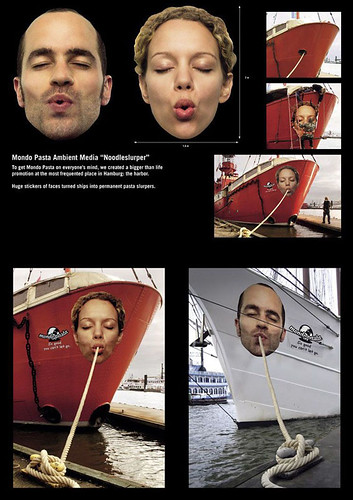

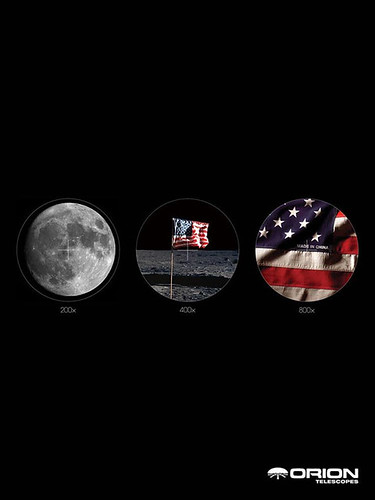
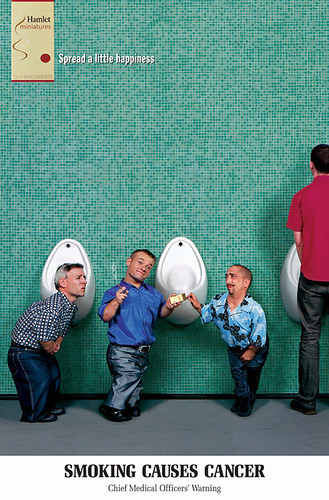
Labels:
funny ads,
Funny Advertising,
print ads
Funny Advertising2
Advertising is getting more creative and smarter day by day. If the advertisement is creative then its definitely going to catch public attention.

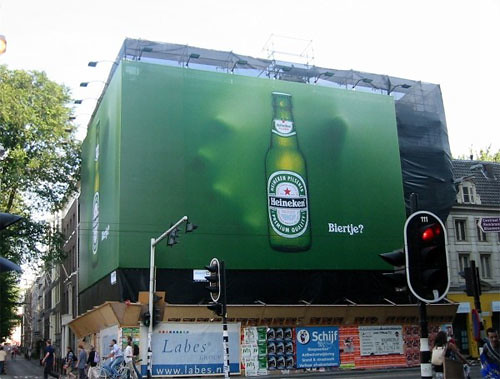

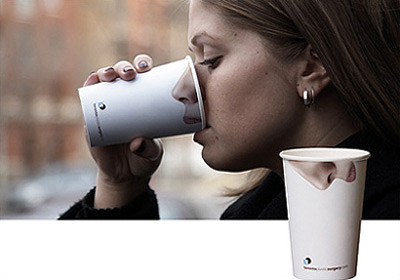

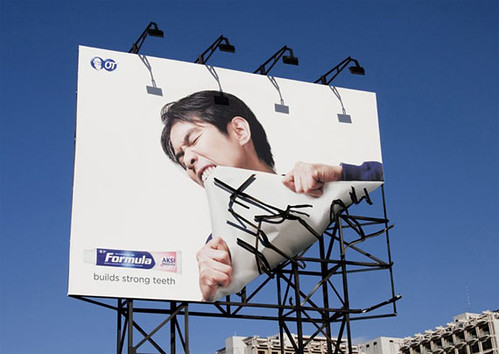
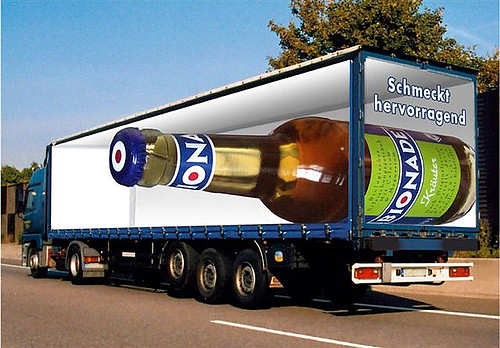
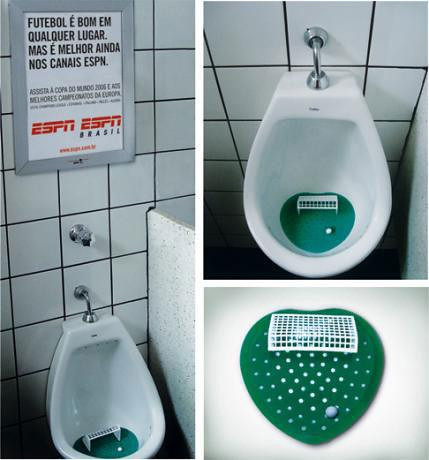

Some of the online advertisement forms really distract you from the actual content. Here are 50 offline advertising that you'll don't mind when it draws your attention. They're so creative and some are so funny, that you'll remember the product they're selling for days.
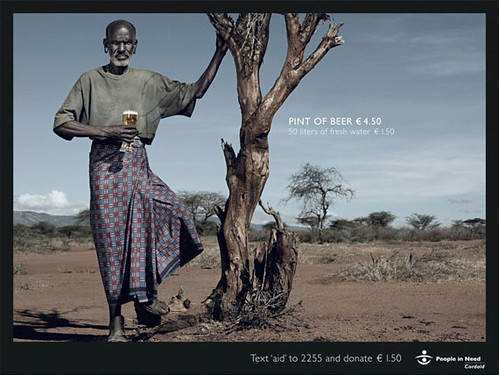
Hope you enjoyed them. Some of these Advertising might have been seen before, even then they are worth seeing again. :smile: Have a great weekend!









Some of the online advertisement forms really distract you from the actual content. Here are 50 offline advertising that you'll don't mind when it draws your attention. They're so creative and some are so funny, that you'll remember the product they're selling for days.

Hope you enjoyed them. Some of these Advertising might have been seen before, even then they are worth seeing again. :smile: Have a great weekend!
Labels:
funny ads,
Funny Advertising,
print ads
Funny TV Commercials
Bridgestone Super Bowl 2008 Commercial
"King Crab" snippet - Budweiser ad for Super Bowl XLI
No wonder our perception of beauty is distorted
Axe Dimension
Bangkok insurance - Twister
"King Crab" snippet - Budweiser ad for Super Bowl XLI
No wonder our perception of beauty is distorted
Axe Dimension
Bangkok insurance - Twister
Saturday, June 14, 2008
Funny Advertising1
Advertising is getting more creative and smarter day by day. If the advertisement is creative then its definitely going to catch public attention.
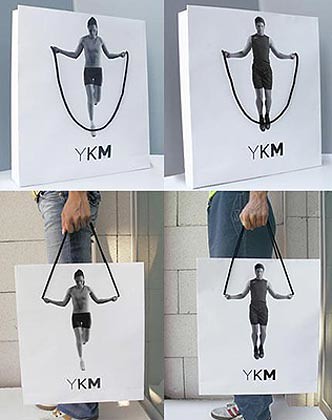
The last image is from Rob Sheridan. It's a drawing of presents opening children. Looks pretty freaky, but the idea is nice.


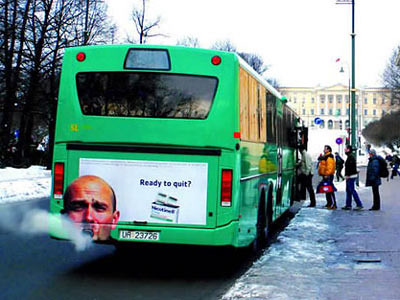
Time to give you another point of view. What would the world look like if you would turn things around? Take a look at the other side.
Delicious children for sale. Will they melt like the ice cream?
The Icecream image was created by nocturnal-devil and has many other nice graphics in his portfolio.

The following images is advertisement that need to be taken seriously. "Don't treat others the way you don't want to be treated".

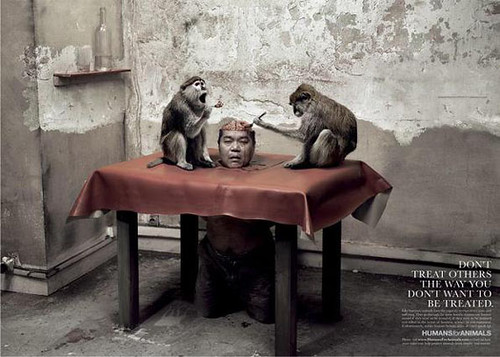
Hope you enjoyed them. Some of these Advertising might have been seen before, even then they are worth seeing again. :smile: Have a great weekend!

The last image is from Rob Sheridan. It's a drawing of presents opening children. Looks pretty freaky, but the idea is nice.



Time to give you another point of view. What would the world look like if you would turn things around? Take a look at the other side.
Delicious children for sale. Will they melt like the ice cream?
The Icecream image was created by nocturnal-devil and has many other nice graphics in his portfolio.

The following images is advertisement that need to be taken seriously. "Don't treat others the way you don't want to be treated".


Hope you enjoyed them. Some of these Advertising might have been seen before, even then they are worth seeing again. :smile: Have a great weekend!
Labels:
funny ads,
Funny Advertising,
print ads
World's Best TVC Advertising
Sidaction-Saltbox

Title : Saltbox
Duration : 00:45
Brand Name : Sidaction
Agency : Leo Burnett Paris
Advertiser : Sidaction
Creative Director : Stephan Ferens
Art Director : Edward Capelle, Stephane Santana
Copywriter : Stephane Santana, Edward Capelle
Director : Dimitri Daniloff
Producer : Jeremie Morichon
Coca-Cola-Happiness Factory

Title : Happiness Factory
Duration : 01:00
สินค้า : Coca-Cola
Brand Name : Coca-Cola
Agency : Wieden + Kennedy, Amsterdam
Advertiser : Coca-Cola Company
COCA-COLA CLASSIC
Coca-Cola advertising has a long tradition of giving us memories that last a lifetime. Visit Coca-Cola.com to watch ads from our latest campaigns.
Honda-Choir

Title : Choir
Duration : 02:00
Brand Name : Honda
Agency : Wieden + Kennedy UK Ltd,United Kingdom
Advertiser : Honda Motor Co.
Creative Director : Tony Davidson, Kim Papworth
Art Director : Matt Gooden, Ben Walker, Michael Russoff
Copywriter : Ben Walker, Michael Russoff, Matt Gooden
Director : Antoine Bardou-Jacquet
Producer : David Stewart
Volkswagen Phaeton-Galanty Show

Title : Galanty Show
Duration : 01:30
Brand Name : Volkswagen Phaeton
Agency : Grabarz & Partner Werbeagentur, Hamburg, Germany
Creative Director : Ralf Heuel, Ralf Nolting
Art Director : Christoph Stricker
Copywriter : Paul von Muehlendahl
Director : Michael Reissinger
NAPCAN-Children see. Children do.

Title : Children see. Children do.
Duration : 01:30
Brand Name : NAPCAN
Agency : DDB Sydney
Advertiser : NAPCAN Foundation
Creative Director : Matt Eastwood
Art Director : Simon Johnson
Copywriter : Charlie Cook
Director : Sean Meehan
Producer : Sean Ashcroft, Sam McGarry

Product Thai life Insurance
Title My Son
Agency : Ogilvy & Mather
Creative : Korn
Production House Phenomena
Director Thanonchai
Producer Tichakorn
ไทยประกันชีวิต-My Girl

Title : My Girl
Duration : 02:00
สินค้า : ไทยประกันชีวิต
Brand Name : Thailife Insurance
Agency : Ogilvy & Mather Advertising (THAILAND)
Production House : Sunshine etc. Co., Ltd
Copywriter : คุณกุลวดี ดอกสร้อย
Director : คุณกำพล วิทย์พิบูลย์รัตน์
Chief Creative Officer : คุณกรณ์ เทพินทราภิรักษ์
Section manager/TV production : คุณยุทธพงษ์ วรานุเคราะห์โชค
Labels:
commercial ads,
Online Ad,
TVC Advertising
Advertising
Advertising is a form of communication that typically attempts to persuade potential customers to purchase or to consume more of a particular brand of product or service. Many advertisements are designed to generate increased consumption of those products and services through the creation and reinforcement of "brand image" and "brand loyalty". For these purposes, advertisements sometimes embed their persuasive message with factual information. Every major medium is used to deliver these messages, including television, radio, cinema, magazines, newspapers, video games, the Internet and billboards. Advertising is often placed by an advertising agency on behalf of a company or other organization.
Types of advertising
Media
Covert advertising
Television commercials
Newer media and advertising approaches
Measuring the impact of mass advertising
Public perception of the medium
Negative effects of advertising
Regulation
Future
Subscribe to:
Posts (Atom)

